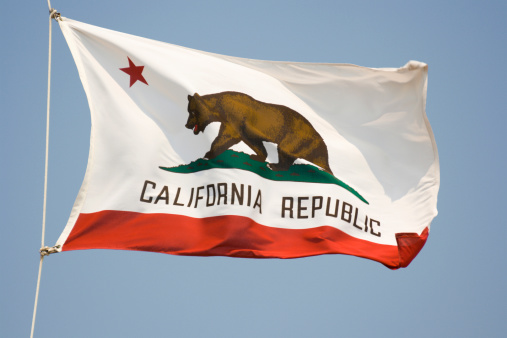
Zócalo Public Square is a magazine of ideas from Arizona State University Knowledge Enterprise.
Californians have short memories. So short that our politicians, from Gov. Brown on down, can’t stop reminding us that only just a few years ago, we were in a recession and a budget crisis. So now—even with low unemployment, rising housing prices, and a budget surplus—they say they must keep funding for many important programs at recession-era levels.
Let’s say, “Bah, humbug!” to the Sacramento Scrooges. There are more productive ways than austerity to make sure we don’t forget the economic lessons of the recent past. For starters, why not create a museum to help us remember?
California would be the ideal location for a Museum of the Great Recession.
After all, we Californians practically invented the global economic meltdown between 2007 and 2009, and the tough recovery that followed. Our middle class, in its aspirational desperation to buy houses and keep up an unaffordable standard of living, led the way into ever growing consumer debt. And California-based Countrywide Financial, once the nation’s largest mortgage lender, led the way in making bad subprime loans that were turned into risky securities.
For all this, we Californians paid a huge price, one that a museum could remind us of: double-digit unemployment, housing market bust, record state budget shortfalls, municipal bankruptcies, the layoffs of thousands of teachers and other public servants, and downturns in nearly every major state industry.
During this recession, middle-class Californians became a minority of the population. And California became, according to global media, a failed state responsible for economic malaise from Spain to Shanghai.
Bottom line: This was our Great Recession, and we shouldn’t let anyone—particularly those vultures on Wall Street—open their own museum first.
Here’s a plan to make it a reality. The museum director should be former California state treasurer Phil Angelides, who led the U.S. Financial Crisis Inquiry Commission that investigated the causes of the recession. The commission’s report should provide the content of the museum’s permanent exhibits, with California showbiz making things more relatable.
For example, to illustrate the Federal Reserve’s failures in financial regulation, Disney could produce audio-animatronic versions of Fed chairman Ben Bernanke and New-York-Fed-chief-turned-Treasury-Secretary Tim Geithner to take visitors’ questions—just like the Abraham Lincoln robot at Disneyland. Gamers could create immersive, room-sized infographics to explain the shadow banking system, credit default swaps, and that whole business with Fannie and Freddie.
The museum wouldn’t neglect the aftermath of the crisis. Visitors could don headphones and listen to real audio recordings of homebuyers who were victims of myriad mortgage mistakes battling unsuccessfully to get problems fixed. (Some of those calls were recorded and preserved for litigation). Museum visitors would compete with former professional robo-signers of foreclosure affidavits to see who could review and sign more mortgage documents (without reading anything, of course) in less than a minute.
The Museum of Jurassic Technology in Culver City could curate a room devoted to Tea Party economic fantasies, credit rating agency reports, and other phony theories from the crisis. One museum room would be decorated as a child’s bedroom—but occupied by a 20-something, with job application cover letters littering the floor.
A gallery of Recession-Related Extinctions could include exhibits on affordable higher education and California Republicans who had to risk their careers by voting for the state budget under the two-thirds vote requirement, which was eliminated with the 2010 elections. Now, the Democrats can pass a budget with a simple majority. But before 2010, a few Republicans had to vote for budgets and put their careers at risk. One such Republican legislator, Anthony Adams, is now a public defender in Mendocino County.
There’s another reason to put the Museum of the Great Recession in California. Our state offers so many possible locations. The museum’s supporters could buy a government building in bankrupt Stockton or San Bernardino to give those cities some much-needed cash. Or it could try to take over any number of malls abandoned during the recession.
My own preferred location would be the former Countrywide headquarters in Calabasas, just off the 101 at the western edge of the San Fernando Valley. The building has the size to be a museum, with 700 parking stalls and 230,000 square feet.
Signs on the fence say it’s available for sale or lease. At a price of $150 per square foot, the state could buy it for $35 million—not much in a state budget of more than $100 billion.
But I suspect this museum could pay for itself. The current rage for financial education would make the Museum of the Great Recession a natural for field trips. Californians have long supported institutions built on economic crisis. After all, arguably our most powerful think tank, on Stanford’s campus, is named for its founder, President Herbert Hoover, who later ushered in the Great Depression.
Joe Mathews is California and innovation editor for Zócalo Public Square, for which he writes the Connecting California column. He wrote this for Thinking L.A., a partnership of UCLA and Zócalo Public Square.
More Must-Reads from TIME
- How Donald Trump Won
- The Best Inventions of 2024
- Why Sleep Is the Key to Living Longer
- Robert Zemeckis Just Wants to Move You
- How to Break 8 Toxic Communication Habits
- Nicola Coughlan Bet on Herself—And Won
- Why Vinegar Is So Good for You
- Meet TIME's Newest Class of Next Generation Leaders
Contact us at letters@time.com